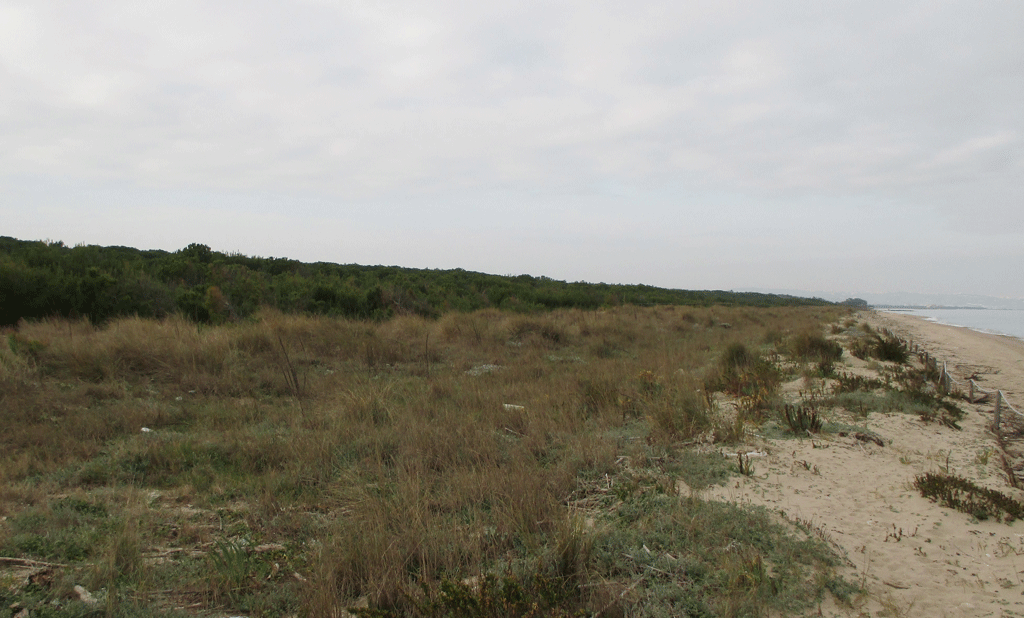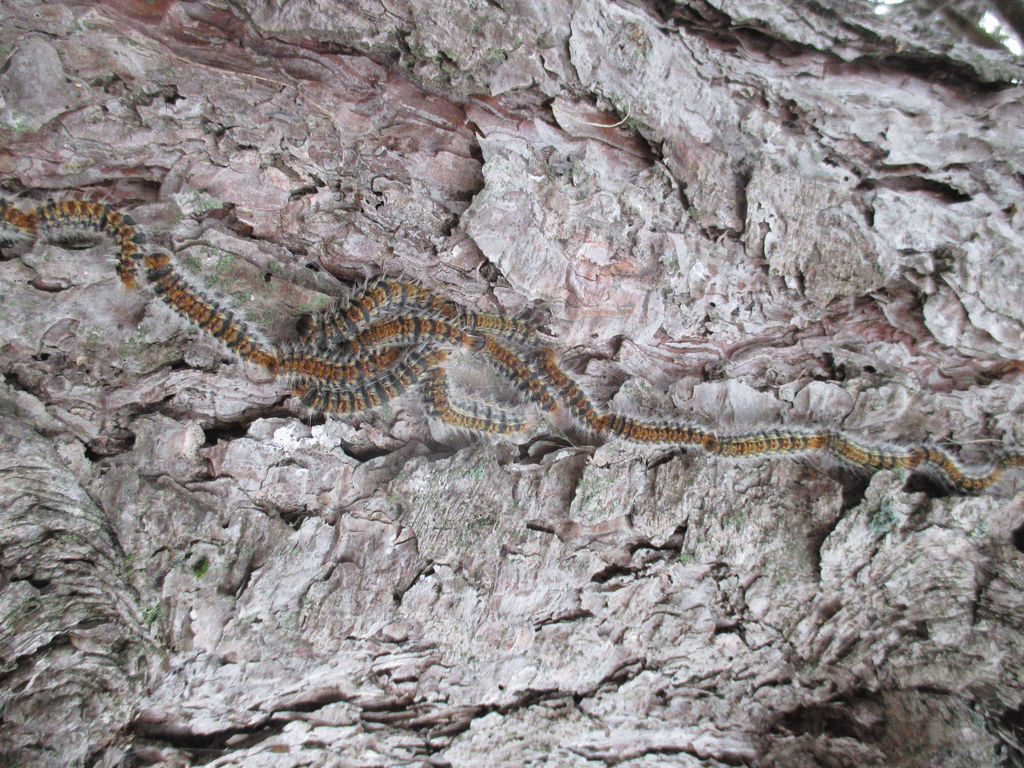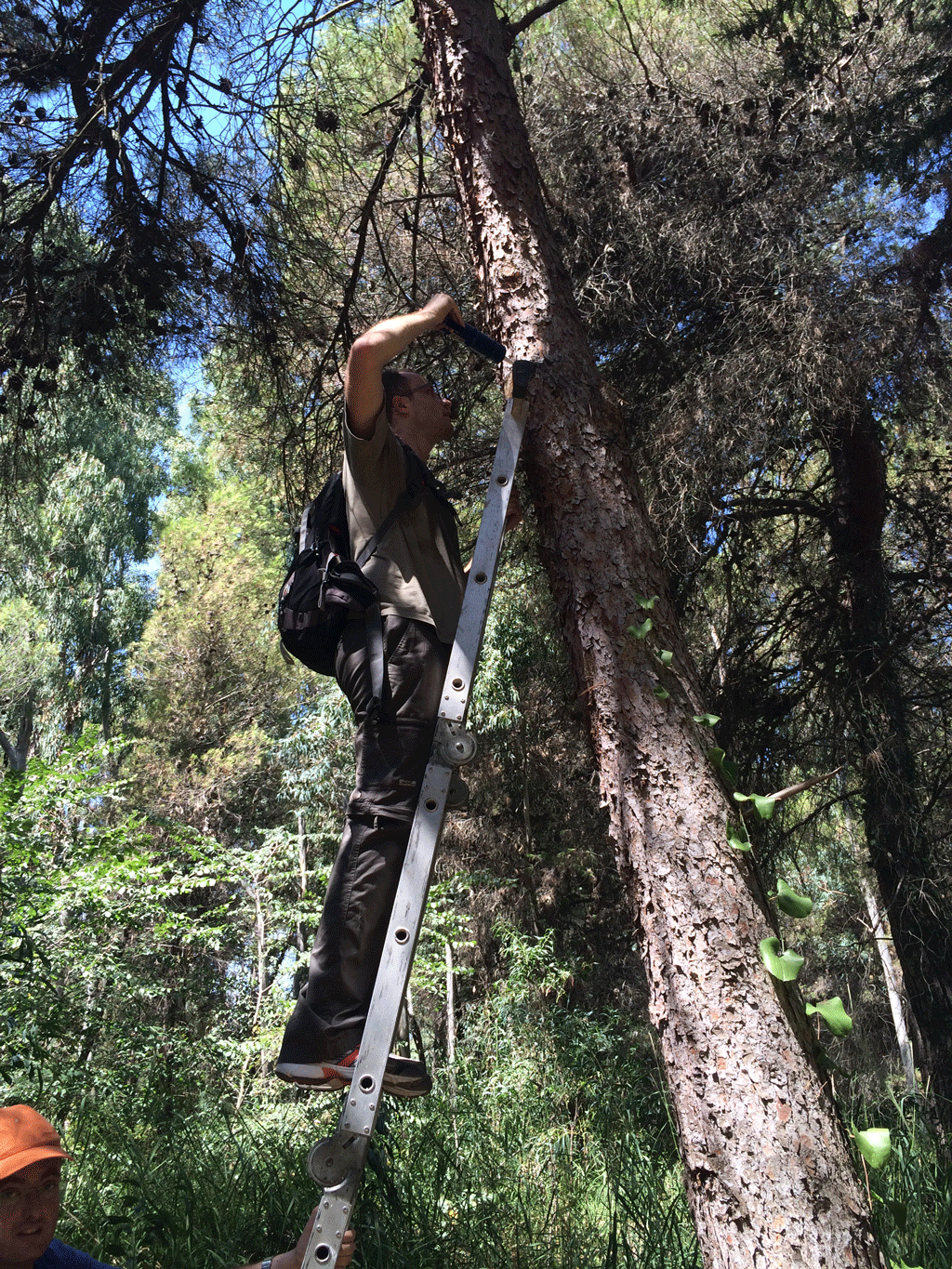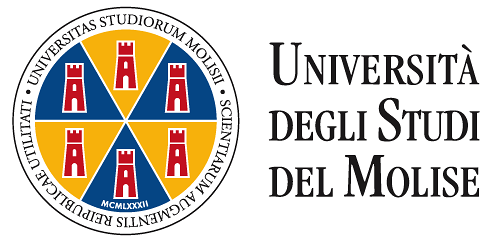Case Study
Sustainable management of Pine processionary moth (T. pityocampa) in a protected area using eco-friendly control methods
Contact name
Pasquale Trematerra
Institution name
University of Molise
Region & country
Molise Region, Italy
Summary
Caterpillars of pine processionary moth, Thaumetopoea pityocampa, cause serious defoliation to various coniferous trees, particularly pines. In addition, the third instar caterpillars develop urticating setae that produce several health problems in humans and domestic animals, ranging from allergic skin urticaria to more serious anaphylactic reactions.
Eco-friendly technologies for the Integrated Pest Management of the Pine processionary moth were applied in the protected area of Petacciato Marina (Campobasso), with the aim of decreasing the moth population, avoiding the use of more traditional control techniques, such as intensive pruning or chemical pesticides, which can cause negative side effects on the forest integrity, biodiversity and human activities.

View of the Petacciato pine forest from the beach
Photo by Pasquale Trematerra

A raw of Pine processionary moth caterpillars on a pine tree.
Photo by Pasquale Trematerra

Management activities in the Petacciato pine forest for sustainable pest control
Photo by Pasquale Trematerra
Background of the project
The coastal area near Petacciato Marina (Campobasso Province, Central-South Italy) presents, just beyond the coastline, an extended pine forest having a significant Pine processionary moth infestation. The area is a Site of Community Importance (SCI), as part of the protected areas of the Natura 2000 network.
Tourists assiduously frequent both the beach and the pine forest, especially during the bathing season. In warmer hours, bathers find refrigeration in the shade of the trees, being exposed to the Pine processionary larvae, whose setae can remain in the nests and on the trees for a long time. In addition, local visitors and pets frequent the pinewood, even outside the tourist season, .
The need identified was to decrease the processionary moth population to limit the defoliation caused by the larvae and the contact between urticating setae and people/pets in the tourist area. At the same time, to preserve the forest integrity and the hosted biodiversity, traditional control methods, such as intensive pruning or chemical pesticides, were strongly discouraged.
Solution and actions taken
According to D. L. 14 August 2012, n. 150, DE 2009/128/CE on Sustainable use of Pesticides, an Integrated Pest Management plan by applying environmental-friendly techniques was performed to decrease the pest populations, consisting of:
- mass trapping of the T. pityocanpa adults in order to capture males and decrease the frequency of mating;
- mating disruption of T. pityocampa males: saturating the air with the sexual pheromone, the males were no longer able to find the females for mating;
- special barrier traps to capture the winter migrant larvae that descend down the trees.
For mass trapping, eight funnel traps per hectare, baited with pheromone dispensers, were positioned inside the canopy, to catch male adults.
For mating disruption, formulated pheromone in paste was positioned on the trunk of the pines at the beginning of the moth flight. The highly volatile pheromone permeated the air and disrupted the mating between males and females.
Against the caterpillars, during the springtime, barrier traps were positioned along the trunks to intercept winter caterpillars in processions descending the trees looking for sites where make metamorphosis.
Other institutions or parties involved
The activities were carried out mainly within a LIFE EU Project (Life PISA) coordinated by SANSAN PRODESIGN (Valencia, Spain), a private company with more than 17 years’ experience in the development of new eco-compatible products in agriculture and providing different solutions for pest control. Molise Region staff participated also to the field activities in the Petacciato forest and to the dissemination and awareness activities directed to the local communities. Forest Rangers are responsible for the management of the forest.
Results
After two years of operations, the Pine processionary moth population decreased. The evaluation was carried out by monitoring the number of adults and the amount of winter nests built by the caterpillars. This decrease resulted in a reduction of the possibility of urtication to people and domestic animals and a reduction in defoliation of trees.
Challenges
Some technical difficulties, for example, due to the height of the trees, the positioning of the traps and pheromones were difficult.
Another critical point is shortage of funds; from 2018, activities could be interrupted.
Lessons learned
In protected and tourist areas, there is the possibility to implement eco-friendly pest control, avoiding the use of chemicals. This kind of application needs for high professional training of operators. The experience can be easily translated also for protection of crops cultivated in protected areas, which require a sustainable pest management, according to the indication for the reduction of pesticide use or risks in protected areas, as defined in Directive 2000/60/EC and in Directive 2009/128/CE.
Other resources
-
Evaluation of Pheromone Trap Devices for the Capture of Thaumetopoea pityocampa (Lepidoptera: Thaumetopoeidae) in Southern Europe
https://doi.org/10.1093/jee/tox050Scientific Publication
-
Management of the Pine processionary moth, Thaumetopoea pityocampa (Lepidoptera: Thaumetopoeidae), in urban and suburban areas: trials with trunk barrier and adhesive barrier trap devices. Journal of Economic Entomology
https://doi.org/10.1093/jee/tox270Scientific Publication
Contact name
Pasquale Trematerra
Institution name
University of Molise
Website(s)
